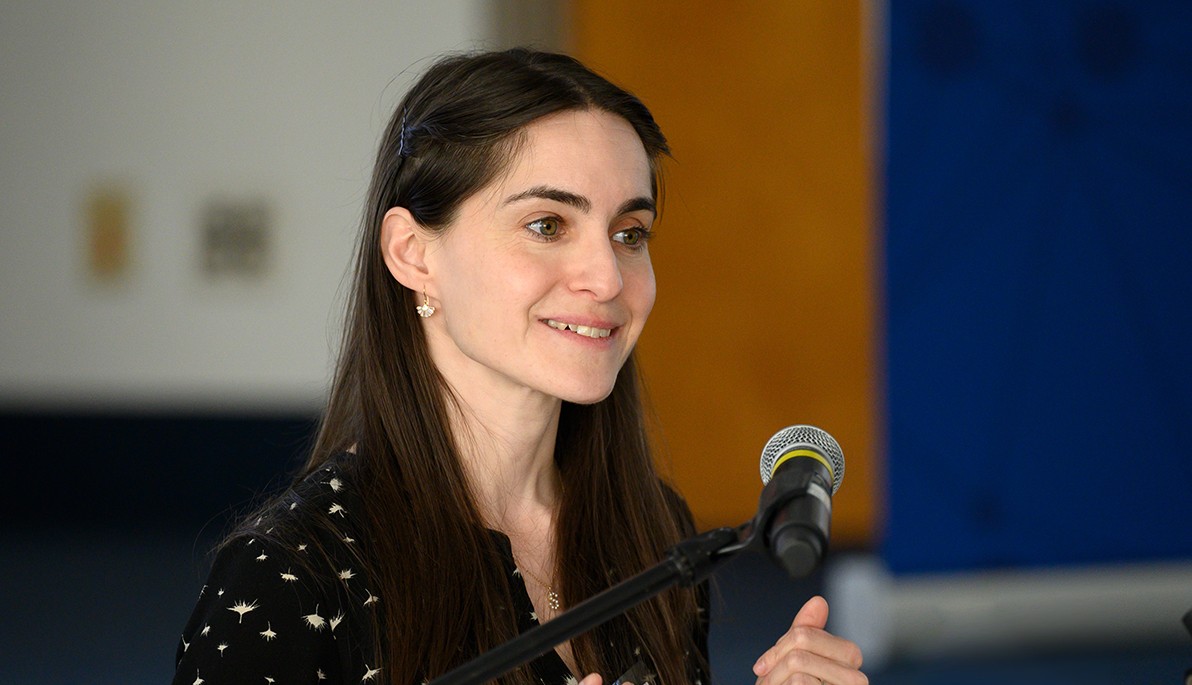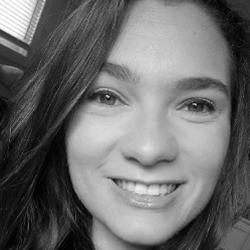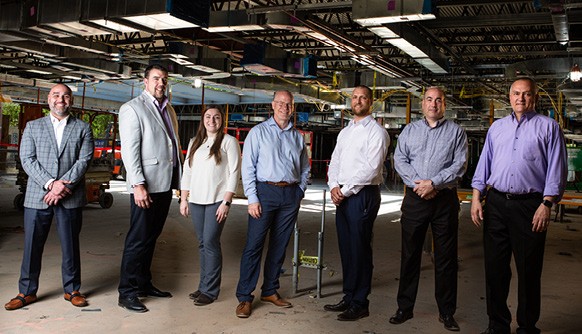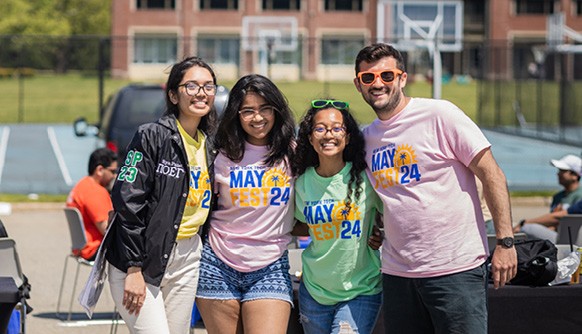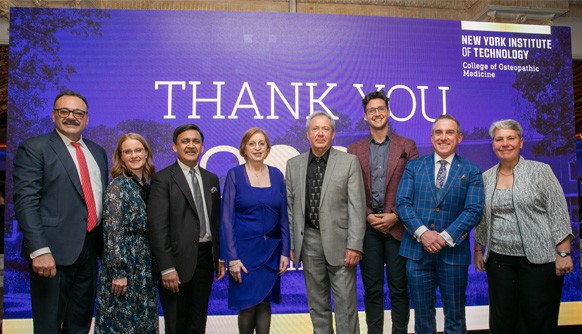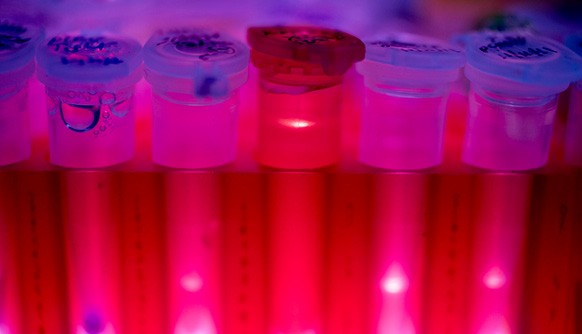News
Annual Faculty Scholars Reception: Best and Brightest
April 6, 2023
Pictured: Sophia Domokos presented her work on string theory and particle physics.
The Student Activity Center was a hot spot on New York Tech’s Long Island campus on March 29 when faculty and staff gathered in person once again to celebrate one another’s academic research and achievements at the Annual Faculty Scholars Reception.
This event commends New York Tech’s full-time and adjunct faculty and staff for the scholarly and creative achievements completed during the preceding calendar year in any of the academic fields represented by the university’s schools or colleges. Qualifying achievements include receiving a grant, publishing original research articles in a nationally recognized peer-reviewed journal or book, and obtaining a patent, among others.
“I am so impressed by all of you who are able to teach and do research at the same time,” said New York Tech President Hank Foley, Ph.D. “We want to make sure that all of you grow as scholars, researchers, and, ultimately, teachers.”
2022 Faculty Research by the Numbers:
- 77 authors with 189 publication credits
- 43 presenters with 114 conference presentations
- 14 honorees with 30 awards
- 6 designers with 6 exhibits
- 51 grant recipients with 57 grants received (internal and external)
President Foley then described the university’s goals to invest in the research enterprise over the next few years, including obtaining more advanced imaging technology and performing building renovations and optimizations. This is in line with New York Tech’s goal to achieve R2 status as a doctoral university with high research activity.
Amid posters and papers on display from dozens of participants, four faculty members formally presented an overview of their most recent work: Batu Chalise, Ph.D., assistant professor of electrical and computer engineering in the College of Engineering and Computing Sciences; Robert Cody (B.Arch. ’94), teaching associate professor of architecture in the School of Architecture and Design; Sophia Domokos, Ph.D., assistant professor of physics in the College of Arts and Sciences; and Michael Granatosky, Ph.D., assistant professor of basic sciences in the College of Osteopathic Medicine.
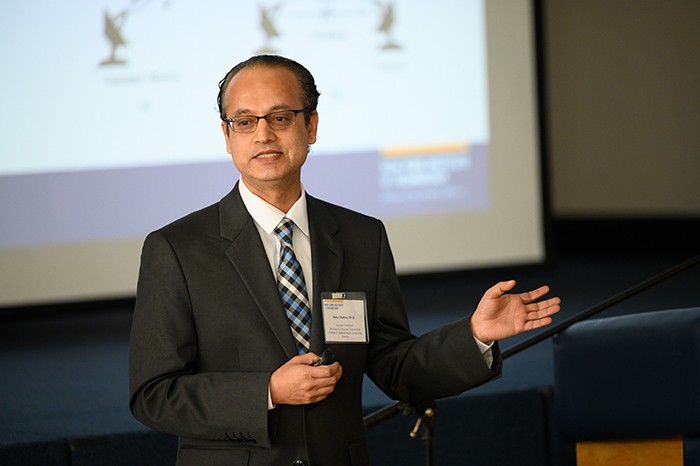
Batu Chalise spoke about signal processing for radar and communications.
Chalise kicked off the slideshow presentations with his research in signal processing for radar and communications. He discussed the recent uptick in balloon detection in United States airspace due to recent changes in radar filters so that reflections from slow-moving objects are no longer filtered out. A challenge with detecting slow-moving objects, he says, is radar struggling to find the objects in harsh weather conditions like fog, rain, and snow. He posits that a solution to this is using distributed radar sensing—a collection of radar sensors that share partial information with each other to create more complete information about a target—to enhance existing radar systems. Chalise states his research, funded by the Department of Defense, aims to develop signal processing algorithms and machine learning techniques to enable this type of radar technology.
Cody followed with an introduction to the book he and his wife Angela Amoia, M.Arch. (B.Arch. ’93), wrote, Alvar Aalto and the Future of Architecture. Finnish modern architect and designer Alvar Aalto, who had big ideas for integrating art, technology, and environmental considerations into his architecture, served as inspiration for the pair’s latest published text. Cody discussed the ways in which architects might become better stewards of the environment by creating buildings that are optimized for their location. He references MIT’s Baker House dormitory building—designed by Aalto to optimize natural light and views of the Charles River. He also noted a trip he took with New York Tech students to Aalto’s native Finland during winter to observe how buildings look, feel, and integrate with their environment.
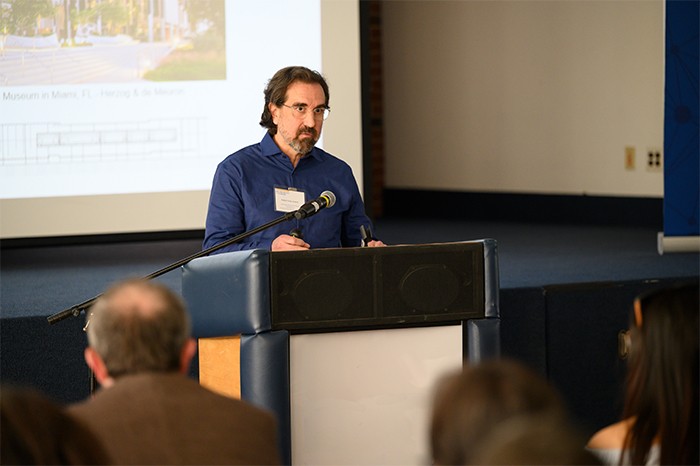
Robert Cody discussed his book Alvar Aalto and the Future of Architecture.
Domokos delivered the penultimate presentation with a conversation about physics. She described her work examining the inner working of matter—supported by a grant from the National Science Foundation. Her work is in string theory and particle physics; she will use holographic duality, a string theory concept, to understand fundamental physical systems and the mathematics used to describe them. Domokos’ goal is to uncover the mystery behind the exact mechanisms allowing elementary particles to create new orders, like quarks and gluons clumping together to form protons and neutrons in atomic nuclei. “It’s like I have a kitchen and I can take all the different ingredients, make a universe, and then use math to see what’s going to happen,” she says. “If you know the math that dictates how the different pieces fit together then you can create any universe you want to, and sometimes these universes are helpful for learning more about our own.”
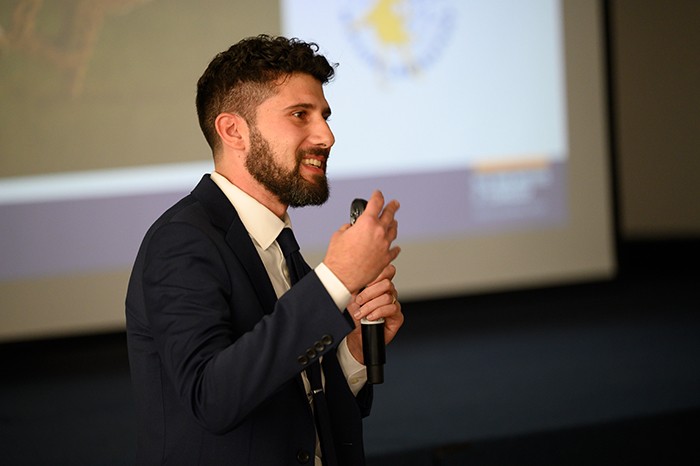
In his presentation, Michael Granatosky spoke about what grip force strength in primates looks like and how it changes as they age.
Granatosky finished up with a discussion of his studies surrounding animal movement. “Animal movement helps us appreciate our natural world, and it helps us ask questions that we never thought were possible,” he says. He then described his work with his students and the trips they take to collect data on animals in other states and other countries. He noted the similarities between a mouse lemur and a human baby—the way they use such small fingers to grasp things—and then questioned the variations in the biomechanics behind grasping. With a grant from the Leakey Foundation and the Duke Lemur Center in North Carolina, Granatosky will collect data from specialized force and grasp sensors to classify and calculate what grip force strength in primates looks like and how it changes as they age. He will also apply this data to humans as he and his students travel to schools and teach about biomechanics while learning about human grip force strength variations.
